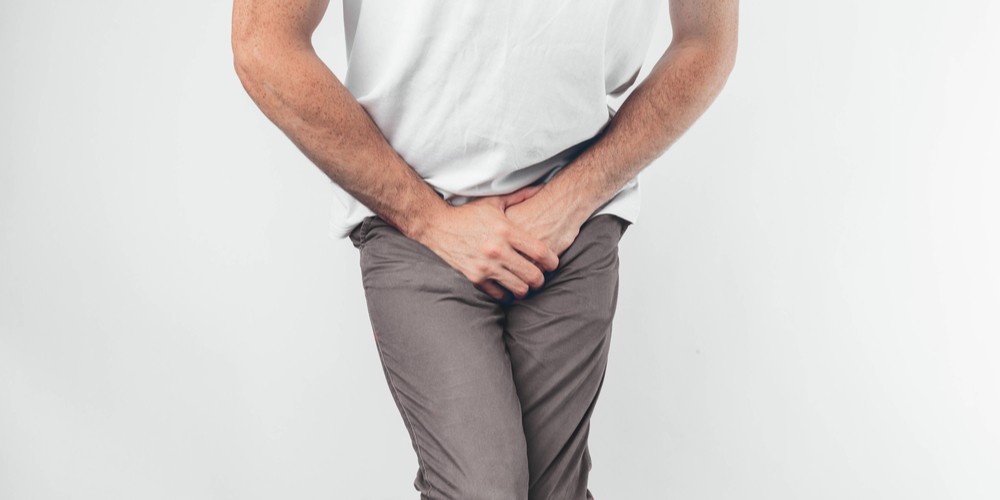
Urinary incontinence which is also known as the loss of bladder control is a common problem. The problem ranges from occasionally leaking of urine when you sneeze or cough to having an urge to urinate which is so sudden and strong that you don’t get to the washroom in time. It occurs to people who get older. If urinary incontinence affects the daily activities, don’t hesitate to see your doctor. For most of the people, changes in the lifestyle or medical treatment can ease the discomfort or stop the urinary incontinence.
Table of Contents
Causes of Urinary Incontinence
Urinary incontinence is not a disease but it’s a symptom. It can be caused by your daily habits or physical problems. A proper evaluation by your doctor can help it to determine what’s behind the incontinence.
Temporary Urinary Incontinence
Certain medications, foods or drinks may act as the diuretics which stimulates the bladder and increasing your volume of urine. It includes:
- Artificial sweeteners
- Chilli peppers
- Large doses of vitamin C
- Blood pressure and heart medications, muscle relaxants
- Carbonated drinks
- Intake of alcohol
- Consuming more caffeine
- Food which is high in sugar, spice or acid, mainly citrus fruits
Urinary incontinence is also caused by an easily treatable medical condition, like:
- Constipation: The rectum is located near the bladder and shares many of the same nerves. Hard stool in your rectum causes these nerves to be overactive and increase the urinary frequency.
- Urinary tract infection: Infections which can irritate your bladder, which cause you to have strong urges to urinate and sometimes incontinence.
Also Read: Urology Problems
Persistent Urinary Incontinence
Urinary incontinence can be a persistent condition which is caused by underlying physical problems or changes which include:
- Childbirth: Vaginal delivery can weaken the muscles which are needed for bladder control. With the prolapse, the rectum, the bladder or small intestine gets pushed down from the usual position into the vagina. Such protrusions can be associated with the incontinence.
- Changes with age: Aging of the bladder muscle can decrease the bladder’s capacity to keep the urine. Involuntary bladder contractions become more frequent as you get older.
- Pregnancy: Hormonal changes and the increase of the weight of the fetus can lead to the stress incontinence.
- Menopause: After the menopause women produce less estrogen, a hormone which helps the lining of the bladder and your urethra healthy. Deterioration of the tissues can also increase incontinence.
- Hysterectomy: In women, the uterus and bladder are supported by many muscles. Any surgery which involves a woman’s reproductive system which includes the removal of the uterus can damage the pelvic floor muscles which can lead to incontinence.
- Prostate cancer: In men, the urge incontinence can be associated with untreated prostate cancer. But incontinence is the side effect of the treatments for prostate cancer.
- Obstruction: A tumor which is along your urinary tract can block the normal flow of the urine which leads to overflow incontinence. Urinary stones which are stone-like masses which get formed in the bladder can cause urine leakage.
- Enlarged prostate: It happens especially in older men, incontinence often stems from the enlargement of the prostate gland, this is a condition which is known as BPH (benign prostatic hyperplasia)
Diagnosis of Urinary incontinence

It’s important to determine the type of urinary incontinence that you have and by seeing your symptoms the doctor will tell which type of urinary incontinence you have. The doctor will begin with the physical exam. The doctor will recommend this after the physical examination is done:
- Bladder diary: For many days record how much you drink, when you urinate, note the amount of urine you produce, whether you had an urge to urinate and the instances of incontinence episodes.
- Urinalysis: A sample of the urine is checked for the signs of infection, the traces of blood or other abnormalities.
Treatment of Urinary Incontinence/ Leaking Of Urine
The treatment of urinary incontinence depends totally on the type of incontinence you are having. You might need a various combination of treatments. The doctor will suggest minimally invasive treatments.
Behavioral Techniques
- Bladder training which will delay the urination after you get the urge to go the toilet. You may begin it by holding it for 10 minutes every time you feel the urge to urinate. The aim is to lengthen the time between the trips to the toilet.
- Fluid and diet management to regain control of your bladder. You might need to cut back or avoid the alcohol, acidic foods or caffeine. Reducing liquid consumption or losing weight or increase physical activity can ease the problem.
- Double voiding, can help you to empty the bladder completely avoid overflow incontinence. Double voiding here means urinating, waiting a few minutes and then trying again.
Medications
Medications are commonly used to treat the incontinence include:
- Anticholinergics: These medications can calm the overactive bladder which may help in the urge incontinence. The examples of these medications include tolterodine, darifenacin, solifenacin, trospium.
- Alpha-blockers: In men who are suffering from urge incontinence, these medications are helpful in relaxing the bladder neck muscles which are there in the prostate which makes it easier to empty the bladder.
- Topical estrogen: For women, who applies low-dose of topical estrogen in the form of a vaginal cream, the patch may help tone and rejuvenate tissues present in the urethra. Systemic estrogen which is taking the hormone as the pill is not recommended for the urinary incontinence.
Medical Devices For Urinary Incontinence
Devices which are designed to treat women with the incontinence which include:
Urethral insert, which is a small, tampon-like disposable device which is inserted into the urethra before a specific activity, like tennis which can trigger the incontinence. The insert acts as a plug to prevent leakage and is removed before the urination.
A pessary is a stiff ring which is inserted into the vagina and wear all time. This device is typically used in someone who has a prolapse which is causing incontinence. The pessary helps to hold up the bladder which lies near the vagina and to prevent urine leakage.
Surgery For Urinary Incontinence
If other treatments don’t work, there are several surgical procedures which can treat the problems which cause urinary incontinence:
- Sling procedures: Strips of the body’s tissue or mesh is used to create a pelvic sling around the urethra and area of thickened muscle where bladder connects to the urethra. The sling also helps to keep the urethra closed, mainly when you cough or sneeze.
- Bladder neck suspension: The procedure is designed to provide the support to the urethra and the bladder neck which is an area of thickened muscles where the bladder gets connected to the urethra. It also involves an abdominal incision, so it’s done during general anesthesia.
- Prolapse surgery: In women with mixed incontinence and the pelvic organ prolapse, the surgery may also include the combination of the sling procedure and the prolapse surgery.
- Artificial urinary sphincter: In men, a small, fluid-filled ring is implanted around the bladder neck to keep the urinary sphincter shut until you are ready to urinate. To urinate, you will press a valve implanted under the skin which causes the ring to deflate and allows the urine from your bladder to flow.
Also Read: How Laser Technique is Beneficial For Urological Treatment?
Preparing For The Appointment
If you have urinary incontinence, just see your doctor first. You may be referred to the doctor who specializes in the urinary tract disorders or if you are a woman, a gynecologist with the special training in female bladder issues and urinary function.








